Ever Dreamed of Jalal-Abad?"
Rugged Peaks, Thermal Pools & the Call of the Wild!
Forget the ordinary, Jalal-Abad doesn’t just offer escapes, it rewrites your idea of adventure. This sun-drenched gateway to Kyrgyzstan’s wild south is where Soviet-era spa towns cling to forested hills, where thermal springs bubble under open skies, and nomadic herders still guide flocks through the world’s largest walnut forests. Trek to the thunderous roar of Arslanbob’s waterfalls, where legends say Alexander the Great once rested, or lose yourself in labyrinthine bazaars where honey sellers press golden combs into your hands like sacred offerings.
By day, ride horseback past canyons striped in burnt orange and rust, stopping to sip mineral-rich water from springs believed to cure centuries of weary travels. By night, feast on lamb slow-cooked over juniper coals as locals recount tales of Silk Road healers and Soviet mountaineers, proof that here, even the air hums with stories. Jalal-Abad doesn’t just invite you to explore, it pulls you into the untamed rhythm of rivers, ruins, and roads less traveled. Ready to answer the call?
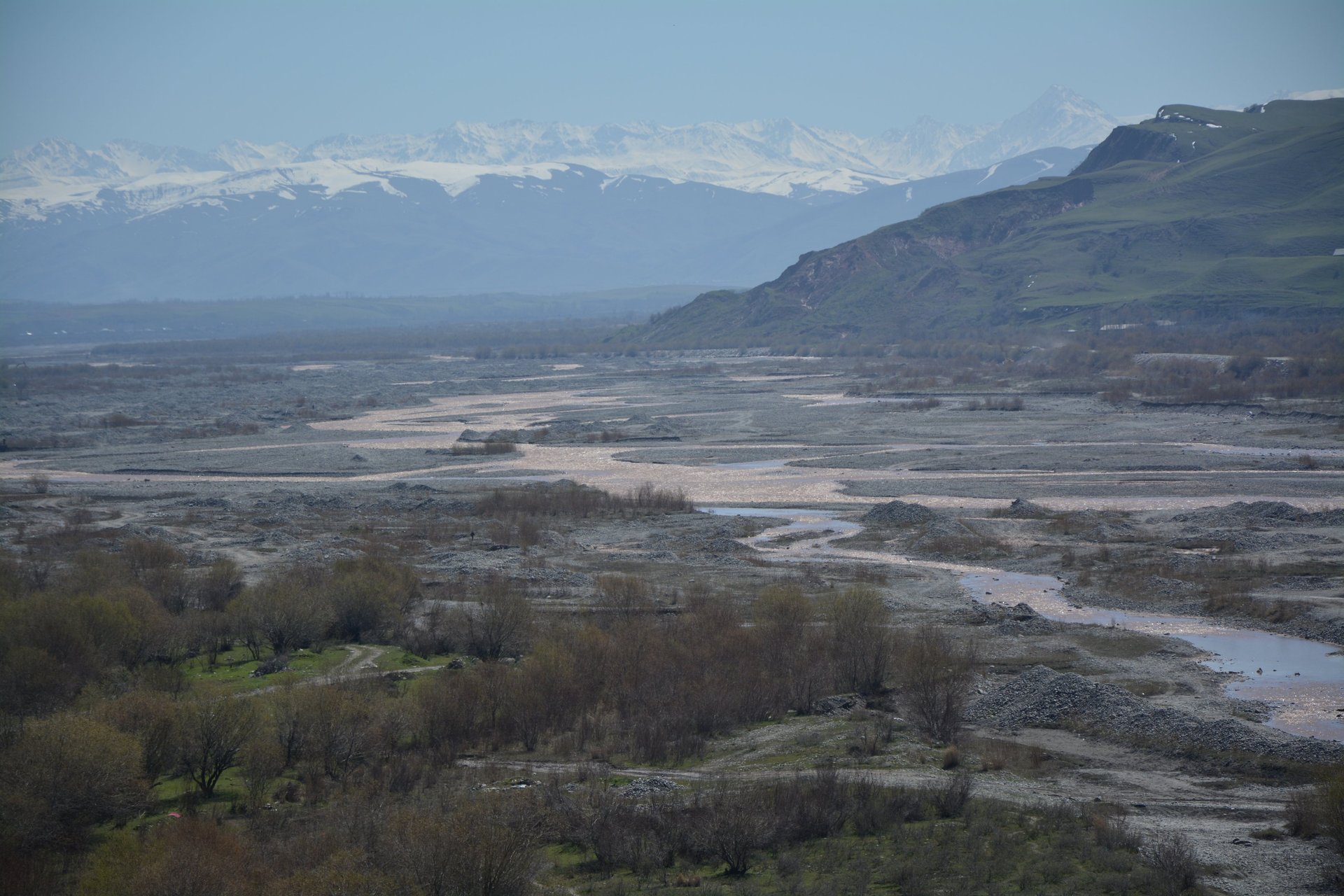
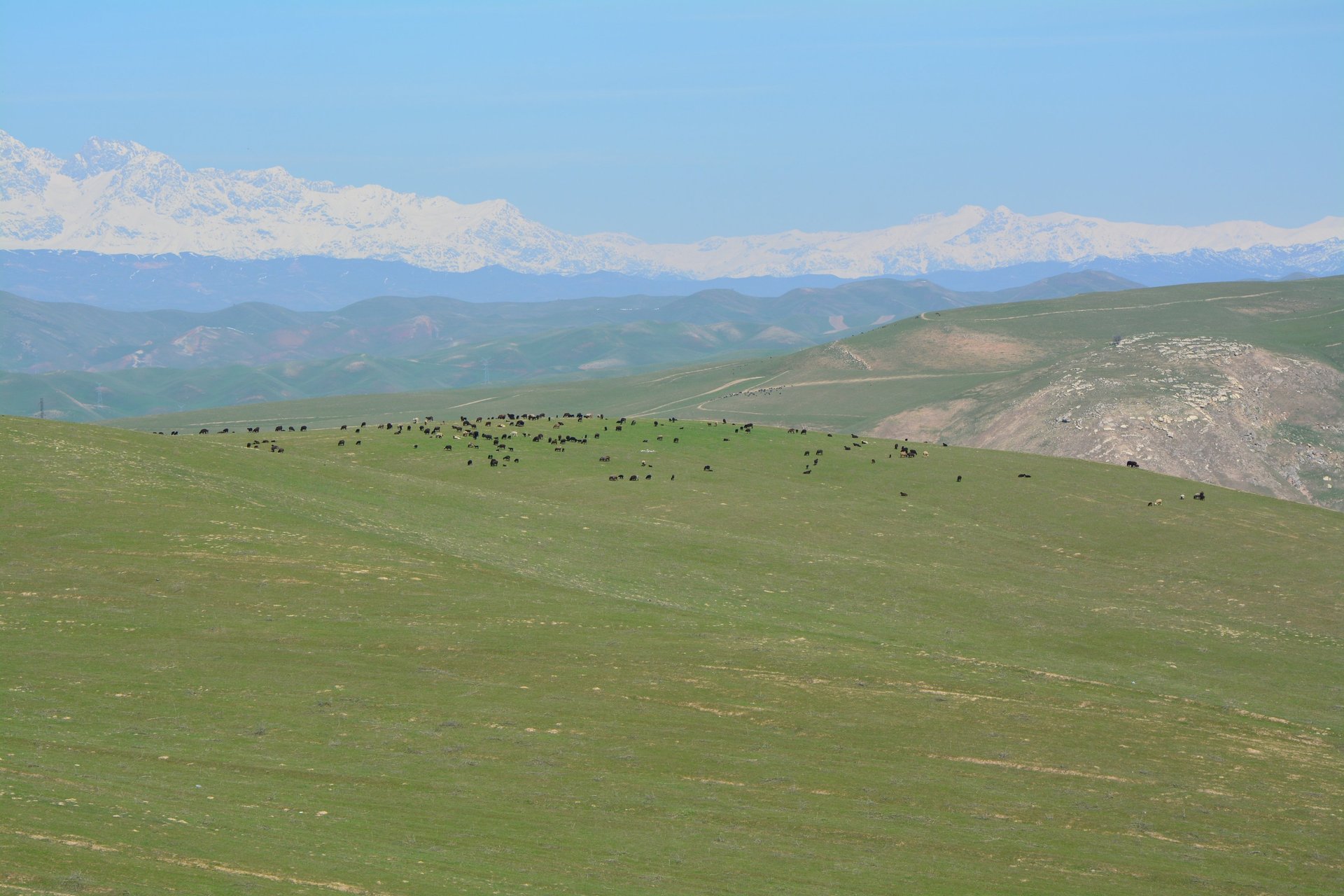
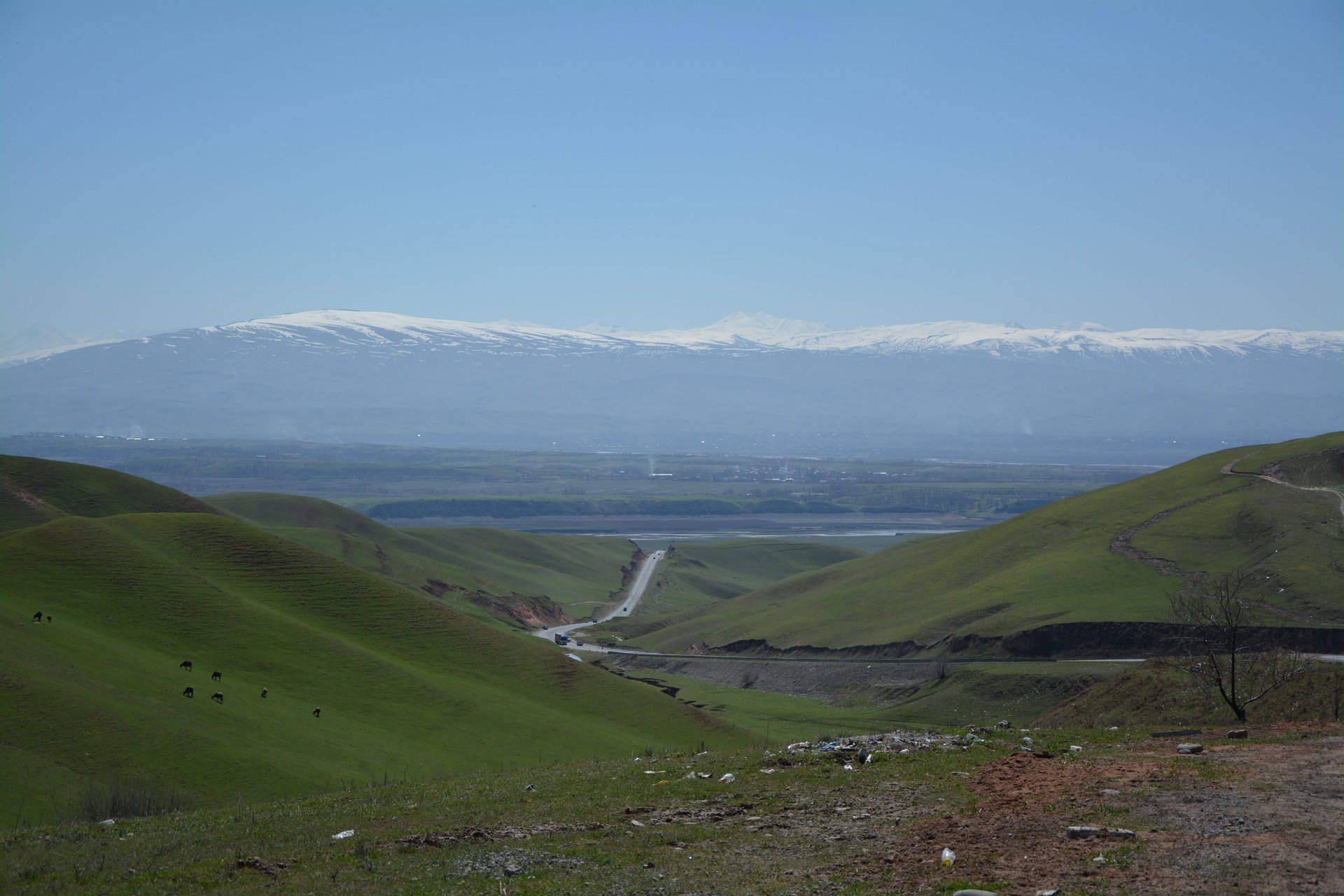
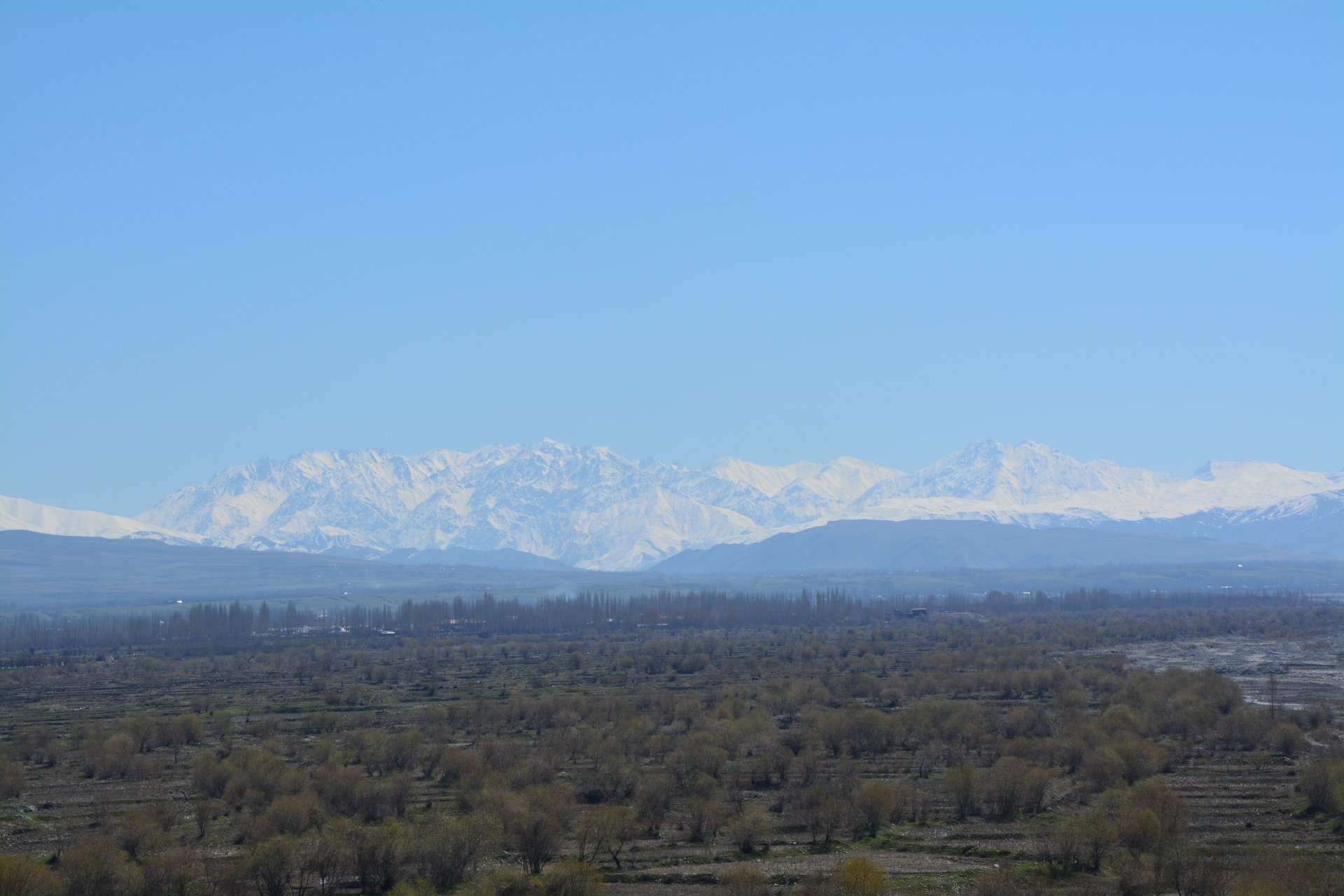
The Road Less Traveled: A Love Letter to Jalal-Abad!
There are places that visit you in dreams long after you've left. For me, that place is Jalal-Abad - where the air smells of warm earth and wild thyme, where every crooked alley holds a story, and where adventure isn't something you plan, but something that finds you when you least expect it.
My first journey there in 2016 began with what locals called "the scenic route" - a winding, border-hugging road from Osh that traced the Kyrgyz-Uzbek frontier like a hesitant cartographer's line. Our Soviet-era van groaned up mountain passes, past the shimmering Andijan Reservoir where the water blurred national boundaries, and through Uzgen's ancient mulberry-shaded streets. Then came the climb - hairpin turns revealing valleys so green they hurt your eyes, until suddenly, at the summit, the world dropped away. We stumbled out of the van, speechless before nature's theater: rolling hills stitched with wildflowers, the distant Alay Range wearing its snow like a crown, and that profound silence that exists only in places untouched by time.
Jalal-Abad announced itself with a rainbow-colored archway - part Soviet relic, part carnival entrance - as if warning visitors: what lies beyond will defy expectations. The streets pulsed with a rhythm unchanged for generations: herds of sheep flowing like living rivers through intersections (always with right of way), their nomadic handlers cracking whips that sounded like gunshots. I learned quickly to brake for more than livestock - old men pushing carts of pomegranates, women balancing towers of fresh lepyoshka on their heads, and always, always the smell of something delicious wafting from hidden courtyards.
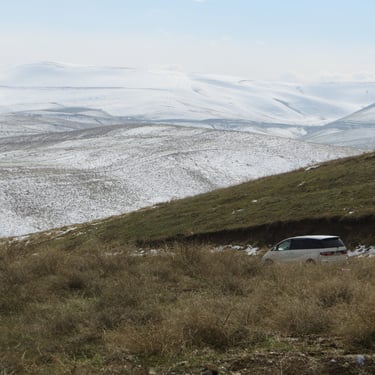
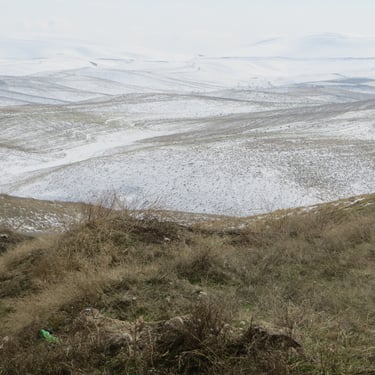
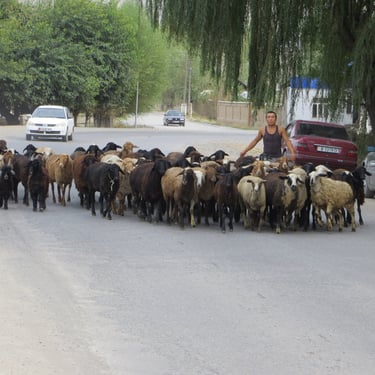
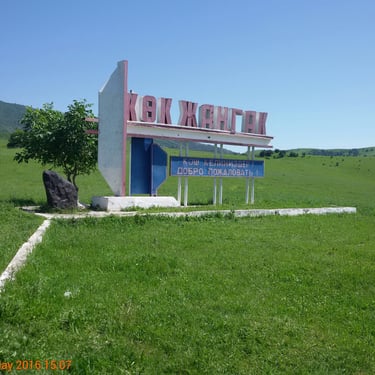
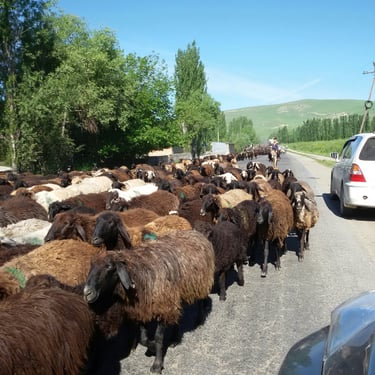

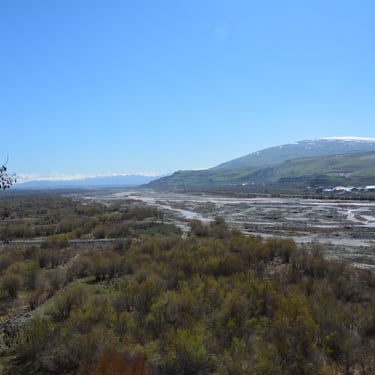
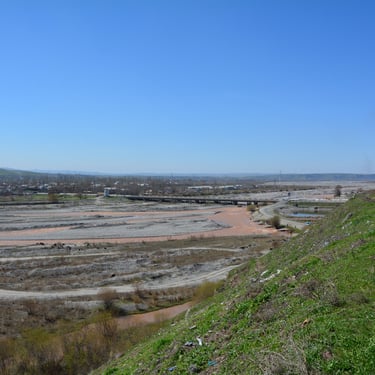

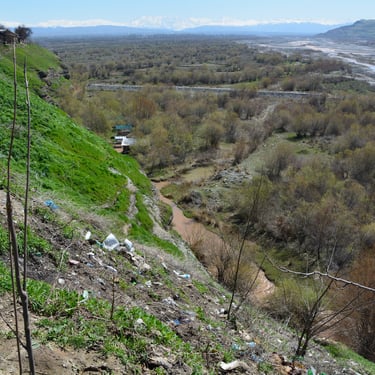
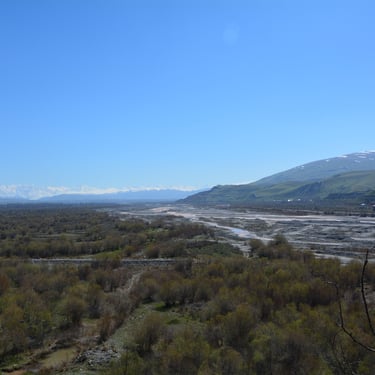

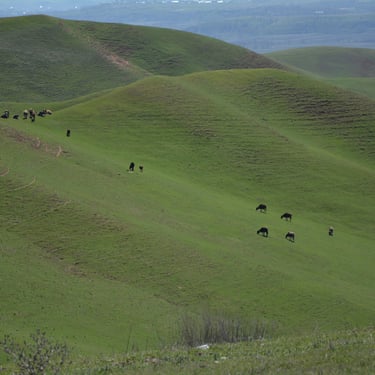
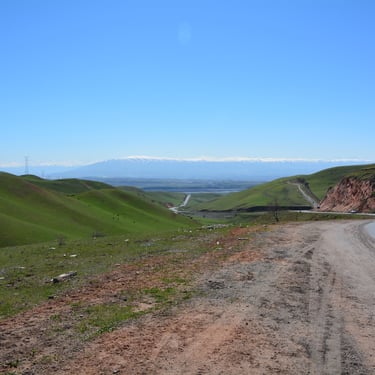
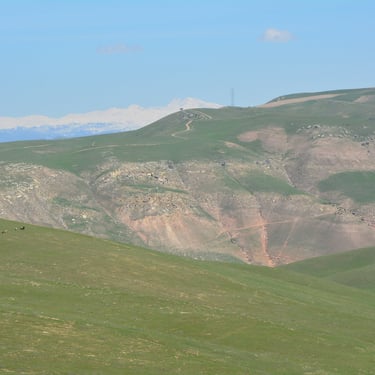

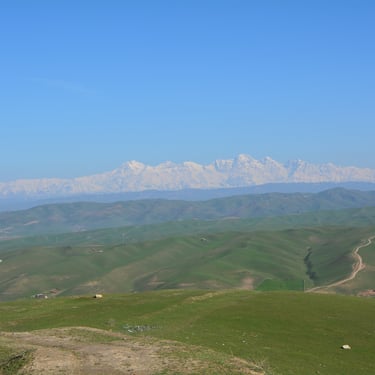
The Magic in the Details
The Lepyoshka Shack by the Kugart River became our daily sacrament. At first glance, it seemed abandoned - a lopsided hut with smoke curling through its cracked clay roof. But step inside, and time folded in on itself: bakers with hands like topographic maps slapping dough against the walls of a tandoor oven, the fire's glow painting their faces bronze. The bread emerged blistered and singing, its crust crackling under our fingers as we tore into steaming rounds on the riverbank. That first bite - the chew of wheat grown in mountain soil, the whisper of woodsmoke, the way the honey we smuggled from the bazaar melted into its pores - ruined me for all other bread.
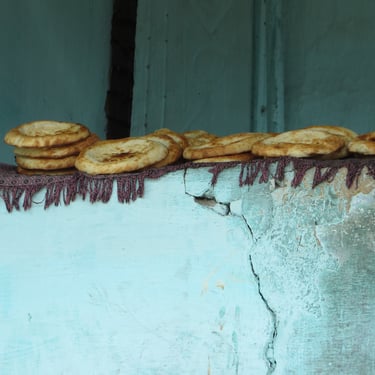
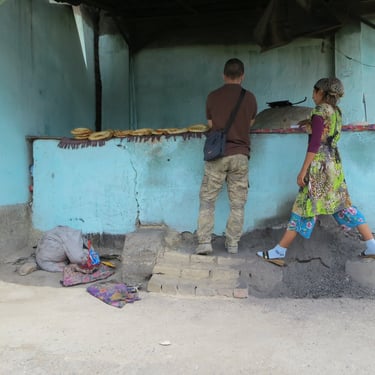
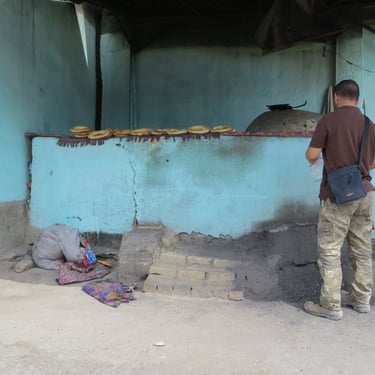
The Schoolchildren transformed the dusty streets each afternoon into a living diorama of resilience. Little girls in starched white pinafores, their hair braided with ribbons bright as prayer flags. Boys in navy Soviet-style uniforms, their oversized collars framing faces already wise beyond years. They marched past donkey carts and smartphone repair stalls with an oblivious dignity that made my heart ache. I once saw a teacher gently adjust a first-grader's red pioneer scarf outside a crumbling Soviet-era school, her fingers lingering on the fabric like it held the weight of history. In their laughter echoing through the bazaar, I heard the stubborn pulse of a culture refusing to disappear.
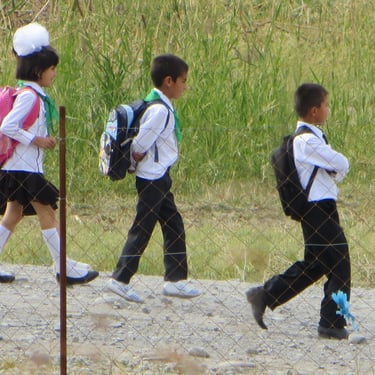
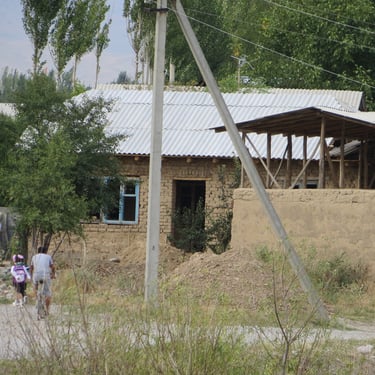
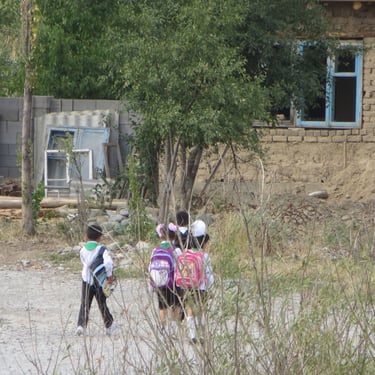
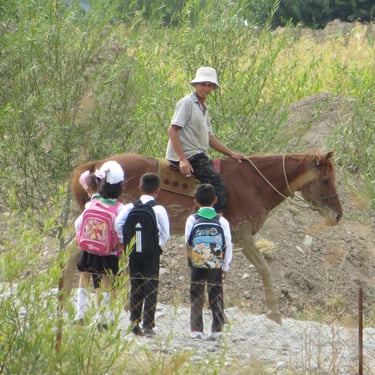
The Paragliding Launch at sunset became my personal rebellion against gravity. The hike up smelled of wild oregano crushed underfoot and the occasional whiff of horses from distant pastures. At the summit, the wind told you when it was time - one moment checking harnesses, the next running full-tilt toward the abyss until the earth dropped away. Suddenly, silence. Just the whisper of wind in the lines and the panorama of Jalal-Abad spread below like a living map: the serpentine Kugart River reflecting the dying light, smoke rising from tandoor ovens in the twilight, the distant peaks of the Fergana Range turning pink. Twenty minutes suspended between heaven and earth, with only the occasional eagle keeping pace beside me. Landing always felt like returning from another dimension.
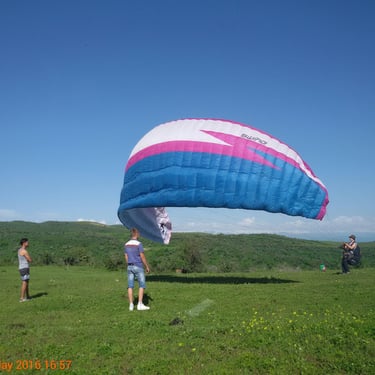
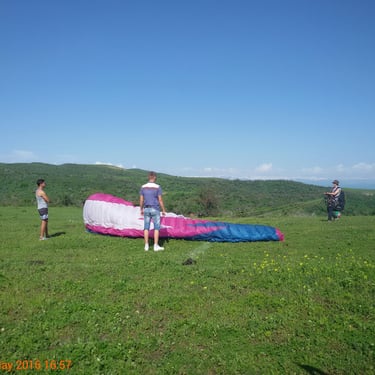
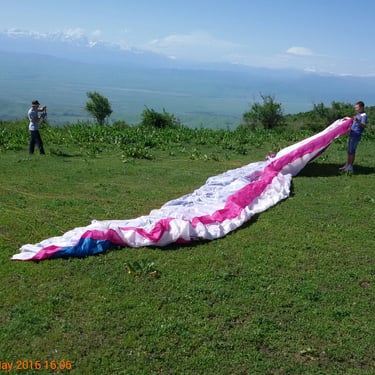
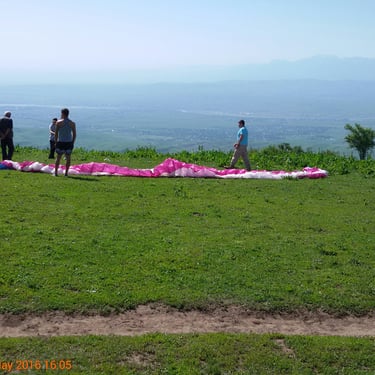
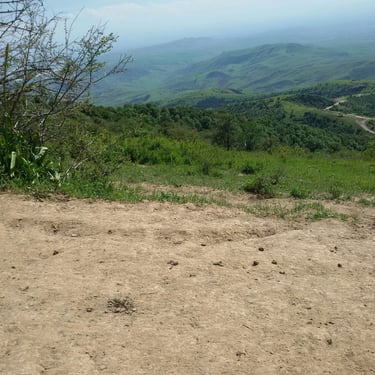
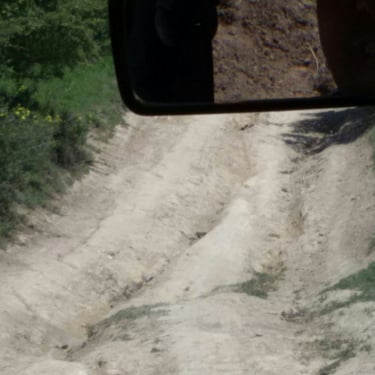
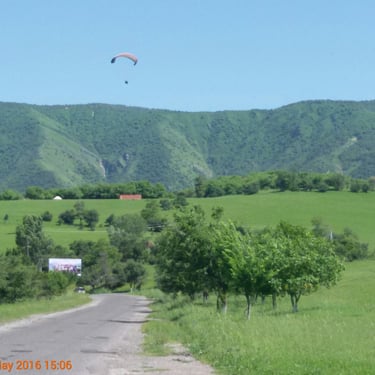
The Unexpected Teachers
There was Kubat, the taxi driver who proudly showed me his "shortcut" through backstreets even Google Maps couldn't fathom, only to get us gloriously lost. "This is how we discover new places!" he laughed, buying us ice cream while we waited for a tractor to clear the road.
Then there was my own accidental triumph - the day I, a clueless foreigner, out-localed a local. Racing back from Osh with my Kyrgyz colleague Talant (a man born and raised in these mountains), I spotted a narrow alley just before Uzgen. On instinct, I swerved right.
"Oyboooy! Where are you going?!" Talant grabbed the dashboard, his eyes wide.
"Prečica!" I grinned - the Serbian word for shortcut bubbling up in my excitement.
For three glorious minutes, we wound through a backstage version of Uzgen: past women beating carpets in courtyard steam, boys playing football with a deflated ball, the smell of tandoor bread mixing with diesel fumes. Then suddenly - we popped out exactly where the main road curved south toward Jalal-Abad.
Talant stared at me like I'd performed magic. "I've driven this route twenty years... and today a Balkan tourist shows me a new path?" He laughed until tears came, then made me stop to buy roadside apricots "for your navigation skills." That unmarked alley became our secret route for the rest of the trip - though we never did determine whether it actually saved time or just gave us more stories.
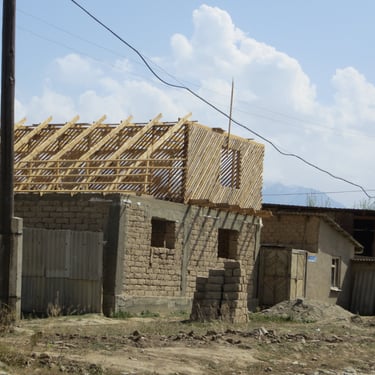
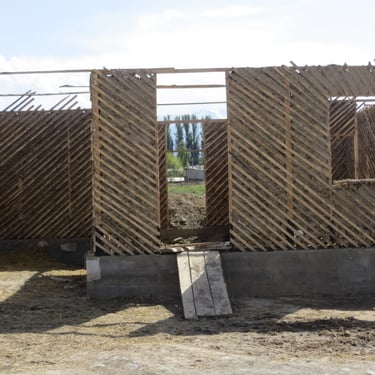
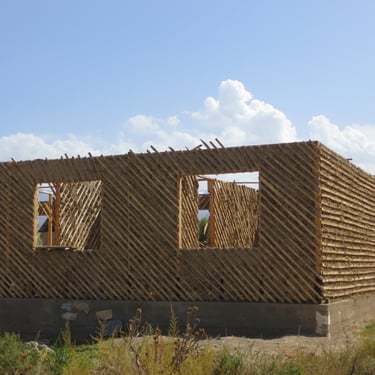
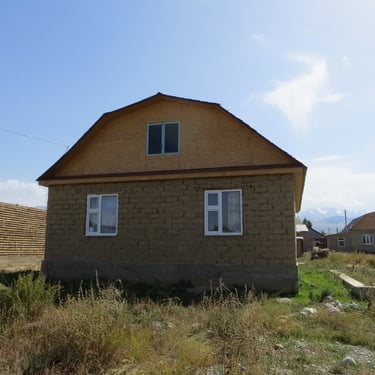
Why Jalal-Abad Stays With You
This is a place that refuses to be pinned down. One moment you're sipping craft coffee in a hipster cafe that wouldn't be out of place in Berlin, the next you're stepping aside for a shepherd leading his flock down the main boulevard. You'll find Soviet mosaics crumbling beside 12th-century mausoleums, and teenagers taking selfies where Silk Road caravans once camped.
But more than the sights, it's the lingering sense of belonging that haunts you. The way shopkeepers remember your coffee order after two visits. The grandmothers who tut at your poor Kyrgyz but feed you anyway. The mountains that watch over the city like patient guardians, their snowcaps glowing at dawn.
Jalal-Abad doesn't just show you Kyrgyzstan - it lets you live inside its contradictions, its beauty, its stubborn, joyful resilience. And when you leave (if you can bring yourself to), you'll realize the healing waters worked their magic after all - not on your body, but on your soul.
P.S. They say a new road bypasses Uzgen now. But take the old way. Some detours aren't delays - they're the journey itself.

The Architecture of Time
Nothing prepared me for Jalal-Abad's houses. Just beyond the bustling center, entire neighborhoods rose from the earth itself - new constructions built the old way. Mud bricks the color of cinnamon, straw protruding like whiskers, their walls thick enough to swallow summer heat and winter chill alike.
I met Rakhat, a mason, while he was building one such house near the Kugart foothills. "Watch," he said, plunging his hands into a trough of clay mixed with sheep's wool. "This is how my grandfather built, and his grandfather before him." His team worked without blueprints, their fingers knowing when a curve needed to bulge outward like a loaf of bread. The drying bricks bore palm prints - accidental signatures of their makers.
At sunset, these earthen walls glowed like honeycomb. I'd walk past courtyards where grapevines climbed trellises made of mulberry branches, the air sweet with fermenting apples. One day, a local colleague of mine, Abduraim, beckoned me inside his mud home. The interior was shockingly cool, the walls breathing subtly as temperature shifted. "No air conditioning needed," she winked, serving me tea in a chipped Soviet-era glass. Outside, a brand-new concrete house stood half-finished across the street - its owner already complaining about the summer heat.
The contrast spoke volumes: in a city racing toward modernity, these ancient building techniques weren't just surviving, but teaching. Every new mud-brick house felt like a quiet rebellion - a declaration that some traditions earn their place in the future.
Video Gallery Jalal-Abad
Jalal-Abad’s Grand Entrance (And Our Unexpected ‘Spot-the-Details’ Challenge!), Kyrgyzstan 🇰🇬


Jalal-Abad Traffic Survival Guide: Dodging People & Soviet Cars in Kyrgyzstan! 🇰🇬
Jalal-Abad, Kyrgyzstan
andijan Reservoir, Kyrgyzstan
Uzgen, Kyrgyzstan
SOCIAL NETWORKS
Be free to reach me over the LinkedIn or E-mail
© 2024. All rights reserved.
It should be clarified that photographs and video footage have been taken from my private album.
These will be included in the prints, on this site and on social media or in any other publications.
Should there be any issues with this or if you would like to opt out of this activity, get in touch please.
